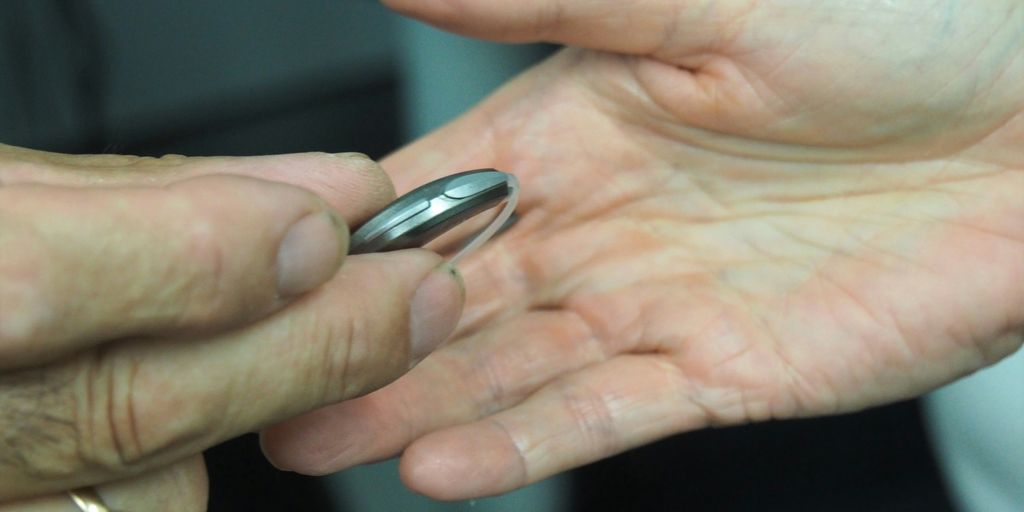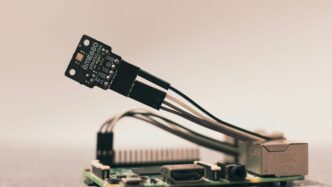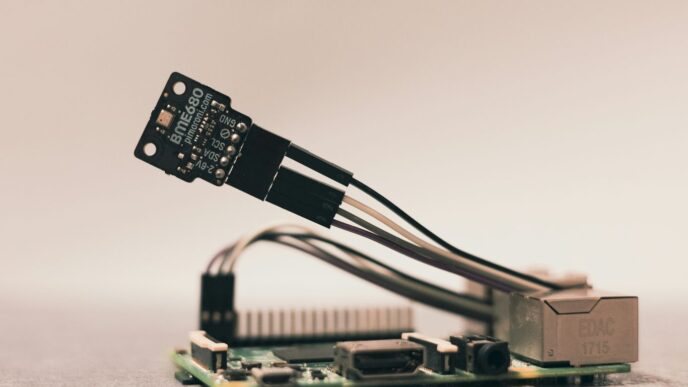Thinking about getting a Ring security system and wondering about the whole ontech ring installation process? It can seem a little confusing at first, especially with all the options out there. Ring itself is pretty much a DIY setup, but they do partner with OnTech for professional installation if that’s more your speed. This guide is here to break down what you need to know, from getting ready to the actual setup, and what to do afterward.
Key Takeaways
- Ring systems are primarily designed for DIY installation, with the app guiding you through each step. This saves money and is generally straightforward.
- OnTech offers a professional installation service for Ring systems, but it’s an outsourced option and might cost more than doing it yourself.
- Before installation, make sure you have a stable Wi-Fi connection and have picked the best spots for your sensors and base station.
- The Ring app is your main tool for setup, including pairing devices and customizing settings like entry and exit delays.
- After setting up, test all components, explore the app’s features, and decide if you want a professional monitoring plan or prefer to self-monitor.
Understanding Your OnTech Ring Installation Options
When you get your Ring system, you’ve got a couple of main paths for getting it set up and running. It’s not like you have a million choices, but the big one is whether you want to tackle it yourself or have someone else do it.
DIY vs. Professional Setup: Making the Right Choice
Most people think of Ring as a do-it-yourself kind of deal. They send you the gear, and there are instructions, but you’re the one doing the actual installing. It’s free to set up yourself, and there aren’t any hidden fees to get it going. If you’re comfortable with basic tech stuff and don’t mind following directions, this is usually the cheaper route. You can get it all working right away. On the flip side, if you’d rather not mess with wires or figuring out where things go, a professional setup might be better. It costs more, but it saves you the time and potential headaches.
The Role of OnTech in Ring’s Professional Installation
So, Ring doesn’t actually have its own crew that comes to your house. Instead, they team up with a company called OnTech for professional installations. If you decide you want someone else to handle the setup, OnTech is who Ring calls. It’s a partnership, so OnTech’s technicians are the ones who will come to your home. It’s good to know that this is an outsourced service, meaning it’s not Ring employees doing the work directly. Some people prefer systems where the installation is done by the company that makes the product, like ADT’s own technicians, but Ring uses this third-party approach.
Evaluating Installation Costs and Value
When you’re looking at the cost, doing it yourself is definitely the way to save money. You just pay for the equipment and maybe a monitoring plan. If you go with OnTech for installation, you’ll pay an extra fee for that service. Ring charges this fee per device, which can add up depending on how many things you’re installing. For example, if you have a base station, a keypad, and a few sensors, each one might have a separate installation charge. It’s worth comparing this to other systems where you might pay one flat fee for the whole house. You have to decide if the extra cost for professional installation is worth the time and effort you save. For some, the peace of mind knowing it’s set up correctly by a pro is worth the price. For others, the savings from a DIY setup are more important.
Preparing for Your OnTech Ring Installation

Getting your OnTech Ring system set up and running smoothly starts before the technician even arrives. Think of it like prepping for a big meal – you wouldn’t just throw everything in the oven, right? You gather your ingredients, chop your veggies, and make sure your kitchen is ready. Your Ring system installation is similar. Taking a little time beforehand makes the whole process much easier and helps avoid any hiccups.
Gathering Necessary Equipment and Tools
While OnTech technicians come prepared, knowing what’s generally needed can be helpful. For a typical Ring Alarm setup, you’ll want to have your Wi-Fi network name and password handy. The base station needs a power outlet, and you’ll want to think about where it will live – usually a central spot is best for signal strength. If you’re adding cameras or doorbells, you might need a drill for mounting, but OnTech usually handles this. They’ll bring their own tools, but having a step stool or ladder available can be useful for reaching higher spots, especially for doorbells or ceiling-mounted motion detectors.
Choosing the Optimal Placement for Your Devices
This is where you can really help OnTech make your system work best. For the base station, a central location in your home is ideal. This helps the signal reach all your sensors and the keypad without issue. For contact sensors on doors and windows, make sure the surfaces are clean and dry before installation – the adhesive works best that way. Motion detectors should be placed in corners or on walls where they have a clear view of the areas you want to monitor, typically about 7-8 feet off the ground. Avoid pointing them directly at heat sources like vents or windows that get a lot of direct sunlight, as this can sometimes cause false alarms. Think about the main pathways people use in your home; that’s usually where you’ll want your motion sensors.
Ensuring a Stable Wi-Fi Connection for Setup
Your Ring system relies heavily on a good internet connection. Before your OnTech appointment, it’s a good idea to test your Wi-Fi signal strength in the areas where you plan to place your base station and any cameras. If you have dead spots or weak signals, you might need to consider a Wi-Fi extender or repositioning your router. The Ring app will guide you through connecting the base station to your network, and a strong, stable connection from the start means a smoother setup and reliable performance down the line. If your Wi-Fi is acting up, it’s worth troubleshooting that before the installation appointment.
Step-by-Step OnTech Ring Installation Guide
Alright, let’s get your OnTech Ring system set up and running. It’s not as complicated as it might seem, and with a little guidance, you’ll have it done before you know it. Think of this as your friendly walkthrough.
Connecting the Base Station and Keypad
First things first, find a good spot for your Ring Base Station. It’s the brain of the operation, so a central location is usually best. Plug it into power and connect it to your home’s internet. Most people use Wi-Fi, but if you have an Ethernet port nearby, that’s an option too. Once it’s powered up, it’ll likely do a quick software update. While that’s happening, grab your Ring Keypad. This is what you’ll use to arm and disarm the system. It usually pairs up with the Base Station automatically, or you might need to press a button on the back. Just follow the prompts on the Keypad itself or in the Ring app.
Pairing Sensors and Motion Detectors
Now for the fun part – adding your sensors! You’ve probably got contact sensors for doors and windows, and maybe a motion detector. The Ring app is your best friend here. Open it up, go to ‘Set Up a Device,’ and choose ‘Security Devices.’ The app will guide you through pairing each sensor. For contact sensors, you’ll typically stick one piece on the door or window and the other on the frame. Make sure they line up when closed. For motion detectors, think about corners of rooms or high-traffic areas where they’ll cover the most ground. A little tip: clean the surface where you’re sticking the sensors first; that double-sided tape really needs a clean surface to hold on tight. You’ll see a little light flash on the sensor when it’s successfully paired with the Base Station. It’s a small detail, but it really helps you know it’s working.
Utilizing the Ring App for Seamless Integration
The Ring app is where all the magic happens. Once your Base Station and sensors are connected, you’ll want to spend some time in the app. It’s where you’ll name your sensors (like ‘Front Door’ or ‘Living Room Window’), which makes it easy to know exactly what triggered an alert. You can also set up your entry and exit delays here. This is the time you have to get in or out without setting off the alarm. The default is usually 60 seconds, but you might want to shorten that to 20 or 30 seconds – 60 seconds can feel like a really long time if something unexpected happens. The app also lets you test each sensor to make sure it’s communicating properly. It’s pretty straightforward, and the app itself has helpful videos for each step.
Key Considerations During OnTech Ring Setup
Understanding Entry and Exit Delays
When you set up your Ring system, you’ll want to get familiar with the entry and exit delays. These are basically little windows of time that let you get into your house and turn off the alarm, or leave without setting it off. Ring lets you set these delays for your main door. It’s a smart feature because if you accidentally trigger a motion sensor in the hallway during that delay, the alarm will sound right away. This stops someone from just walking in and disabling the system. The default delay is 60 seconds, which feels pretty long. Honestly, 20 seconds is usually enough time to disarm the system if you don’t have any mobility issues. A longer delay might give someone unwanted extra time, so consider adjusting it.
Muffling the Siren During Initial Setup
It’s a good idea to know how to mute the siren while you’re still getting things set up. False alarms can happen, especially when you’re testing out new sensors or connections. You don’t want the loud siren going off unexpectedly, especially if someone’s sleeping or if you have pets. Most systems, including Ring, have a way to temporarily disable the siren during the setup process. Check the Ring app or the base station’s instructions for how to do this. It makes the whole setup experience much less stressful.
Troubleshooting Common Installation Issues
Even with professional help, things can sometimes go a bit sideways during setup. One common hiccup is Wi-Fi connectivity. Make sure your Wi-Fi is strong where you plan to put the base station. If you’re having trouble pairing sensors, double-check that the batteries are correctly inserted and that the sensor is within range of the base station. Sometimes, simply restarting the base station can fix minor glitches. If a sensor isn’t sticking well, like the door sensor example where it fell off, make sure you’ve cleaned the surface properly before applying the adhesive. For persistent issues, the Ring app often has a troubleshooting section, or you can reach out to OnTech support for assistance.
Post-Installation Best Practices for Ring Systems
So, you’ve got your Ring system all set up and humming along. That’s great! But don’t just walk away and forget about it. There are a few things you’ll want to do to make sure everything is working right and that you’re getting the most out of your new security setup. It’s like after you get a new car – you don’t just drive it off the lot and never check the oil, right? Same idea here.
Testing All Components After Installation
First things first, you absolutely need to test every single piece of your Ring system. This isn’t just a quick glance; it’s a proper check. You want to know for sure that the door sensors actually sense the door opening, that the motion detectors pick up movement, and that the base station is communicating with everything. A good way to do this is to walk through the process yourself. Open a door, walk past a motion sensor, and see if the app registers it. It’s better to find out a sensor isn’t working now, rather than when you actually need it. If you have cameras, check the live feed and make sure the recording works too. It’s also a good idea to test the siren, but maybe warn your family or neighbors first – it’s loud!
Exploring Ring App Features and Settings
The Ring app is where all the magic happens, so spend some time getting familiar with it. You can adjust things like entry and exit delays – the default 60 seconds might be a bit long for some, giving you plenty of time to get in and out, but maybe too much time for a quick exit. You can also customize notification settings so you only get alerts that matter to you. Think about what kind of alerts you want and how you want to receive them. You can also check the battery levels of your sensors right from the app, which is pretty handy.
Understanding Monitoring Plans and Self-Monitoring
Ring offers a few ways to keep an eye on your system. You can go with professional monitoring, where a team watches for alerts and can contact emergency services for you. This usually comes with a monthly fee, but it’s a good option if you want that extra layer of security. They offer a free trial, so you can test it out. Alternatively, you can choose to self-monitor. This means you’ll get alerts on your phone and it’s up to you to decide if you need to call the police or fire department. It’s free, but it requires you to be vigilant. Think about your lifestyle and what makes the most sense for your peace of mind. For more on setting up cameras, check out this guide to installing wireless Ring security cameras wireless Ring security cameras.
Maximizing Your Ring System’s Performance
Once your Ring system is up and running, you’ll want to make sure it’s working at its best. Ring offers a lot of flexibility, especially if you’re already into smart home tech.
Integrating Ring Cameras and Doorbells
Ring has a huge lineup of cameras and doorbells, and they all play nice with the Ring Alarm system. If you’ve got a Ring Video Doorbell, you can see who’s at the door right from the Ring app, even when the alarm is armed. Plus, if a motion sensor goes off near a Ring camera, that camera can start recording automatically. It’s like having extra eyes all over your house. This interconnectedness is key to a truly robust security setup.
Leveraging Z-Wave Compatibility
This is a big one if you have other smart home gadgets. Ring Alarm uses Z-Wave technology. What does that mean for you? It means you can connect devices from other brands that also use Z-Wave. So, if you have Z-Wave smart lights or smart locks, you can often link them to your Ring system. Imagine your lights turning on automatically if a motion detector is triggered – pretty neat, right? It makes your whole home work together.
Optimizing Sensor Placement for Enhanced Security
Where you put your sensors really matters. Don’t just stick them anywhere. For doors and windows, make sure the two parts of the sensor line up correctly when closed. For motion detectors, think about where someone would actually walk. Placing one at the end of a hallway or in a main living area makes sense. Avoid pointing them directly at windows or heat sources like radiators, as this can cause false alarms. It’s all about thinking like someone trying to get in, and then protecting those paths.
Wrapping Up Your Ring Setup
So, you’ve got your Ring system installed, and hopefully, it wasn’t too much of a headache. Whether you went the DIY route with the app’s guidance or opted for professional help, getting your home security up and running is a big step. Remember, the little things, like cleaning surfaces before sticking on sensors, can make a difference. If you ran into any snags, don’t sweat it – most issues are fixable, and there’s a whole community online ready to help. Now you can rest a bit easier knowing your home is that much more secure.
Frequently Asked Questions
Do I have to hire someone to install my Ring system?
Ring systems are mostly designed for you to set them up yourself. Ring sends you the equipment and easy-to-follow instructions. While there is a pro installation option, Ring works with a company called OnTech for this service. Many people find the DIY setup straightforward and a good way to save money.
What tools do I need for Ring installation?
When you get your Ring system, it comes with everything you need. You might want to have a drill handy for some parts, but often, the sensors stick on with strong tape. The app guides you through each step, and there are even short videos to help you out.
Where should I place my Ring devices during setup?
It’s a good idea to put the main base station in a central spot in your house so the alarm can be heard everywhere. For sensors, pick places that cover important entry points like doors and windows. Make sure your Wi-Fi signal is strong where you plan to put the base station.
Can I use different versions of Ring sensors together?
Yes, you can mix and match older and newer Ring sensors. As long as they use the Z-Wave network, they should work together just fine with your Ring base station. This makes it easy to upgrade your system over time.
How can I manage the siren during installation?
When you first set up your system, it’s smart to cover the base station’s speaker with a pillow. This helps keep the loud siren noise down while you’re learning how to use it. The siren is very loud, which is great for scaring off intruders, but can be startling during setup.
What are entry and exit delays, and how do I set them?
The Ring app will guide you through setting up entry and exit delays. These delays give you time to get inside and turn off the alarm, or leave without it going off immediately. You can adjust how long these delays are, but it’s best to keep them short, like 20 seconds, so a burglar doesn’t have too much time.














